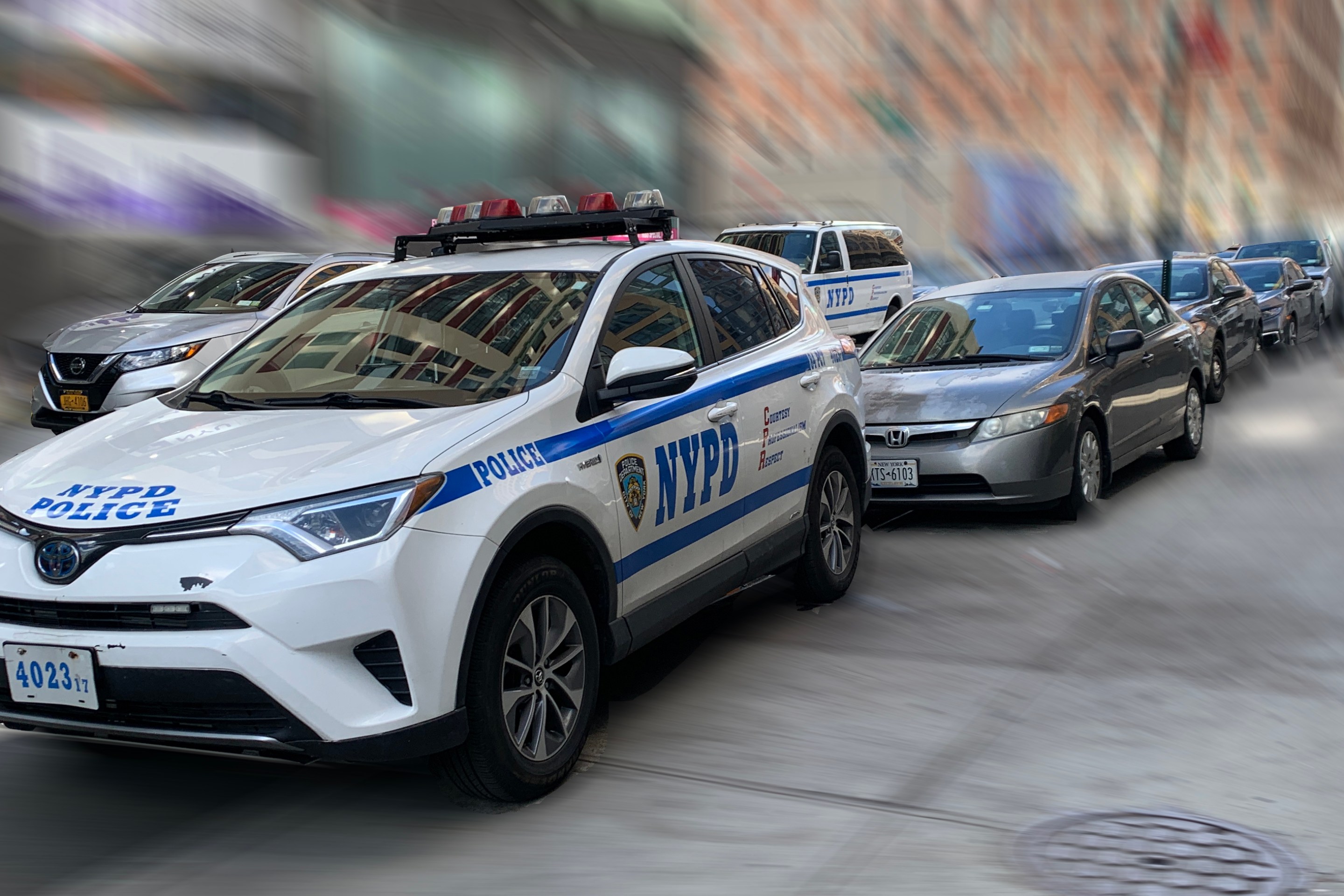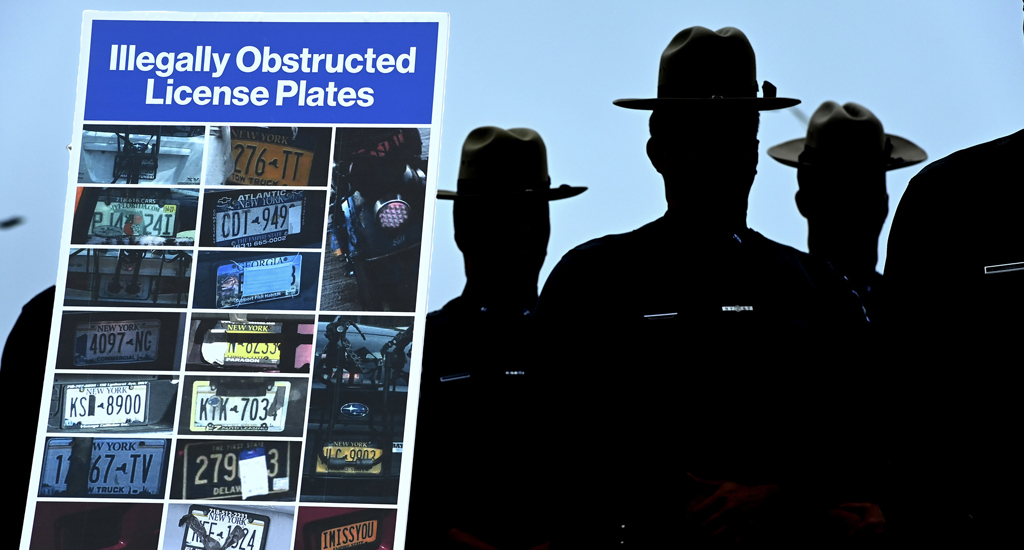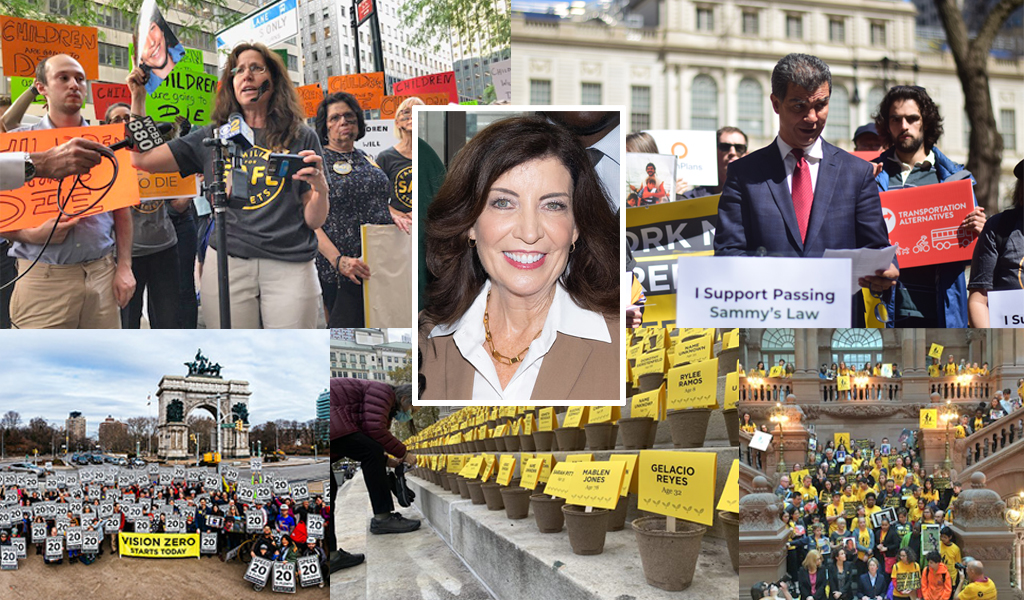Why New York Needs Strict Criminal Liability for Traffic Violence
3:09 PM EST on March 5, 2013

In the last ten days, nine New Yorkers were killed by traffic violence. In each case where the driver responsible was sober and stayed at the scene, NYPD has announced, often within hours, that there was “no criminality suspected.” How can the deaths of so many fall completely outside the scope of the criminal laws? The answer lies in the traditional emphasis in criminal law of punishing the “evil mind.” Meaningful driver accountability requires that we move past "evil minds" and implement strict criminal liability for traffic violence.
Most criminal laws require a finding of both a wrongful act and a blameworthy state of mind on the defendant's part. This reflects reasonable concerns that innocents not be punished as criminals. As technology has made it possible to cause widespread harm unintentionally, reckless and even negligent wrongdoing has in some cases come to be treated as criminal. But the traditional emphasis on a blameworthy state of mind continues to disfavor the prosecution of drivers for traffic violence.
Even the least blameworthy mental state that can support a criminal charge, that of criminal negligence, requires proof that a defendant’s failure to perceive a risk constituted a “gross deviation” from what a reasonable person would have perceived in the same circumstances. Given the risky conduct so common in traffic — such as speeding and failure to yield — it is difficult to convince jurors, who may do these things themselves, that such acts constitute a “gross deviation” from what is reasonable.
While “criminality” in a traffic context requires finding a “gross deviation” from what is “reasonable,” the average juror's definition of “reasonable” is the baseline level of risk-taking in everyday traffic. That baseline risk-taking results in hundreds of deaths and thousands of serious injuries each year, but effectively serves as a norm against which only the most egregious cases of traffic violence can raise a suspicion of “criminality.”
How can our criminal justice system rise above this acquiescence to traffic violence? We all have a role to play, bringing a higher notion of street justice to our service as jurors, and sharing it with others. Prosecutors have a special role in framing and applying social norms in determining which cases are prosecuted, and in persuasively articulating those norms to juries. And prosecutors must rely heavily on the investigation work of police officers, some of whom too readily give up the search for evidence of criminality on the philosophy that “accidents happen.”
But a more direct exit from the misery-go-round of socially accepted traffic violence lies in the enactment of “strict liability” criminal statutes that do not require proof of a blameworthy state of mind. The reason police do not announce “no criminality suspected” in cases involving drunk drivers is that vehicular manslaughter and vehicular assault are strict liability crimes that apply whenever a driver kills or injures another while impaired by drugs or alcohol. The liability is not entirely strict — the driver is given the opportunity to prove that the crash would have occurred even in the absence of impairment — but there is no need to prove that the driver intended harm, was aware of a risk of causing harm, or “grossly deviated” in failing to perceive the risk of harm.
The need for more strict liability crimes to deter traffic violence is apparent from the many tragic deaths in recent days. A strict liability criminal statute could be enacted for drivers who injure or kill pedestrians on the sidewalk, such as Martha Atwater or Mansoor Day. Such a statute would presume criminality, without any need to prove that the driver’s mental state “grossly deviated” from what is “reasonable.” The driver should be allowed a chance to rebut the presumption of criminality, for example, by proving that the vehicle was knocked onto the sidewalk by a second vehicle without fault by the driver of the first. But claims that the driver mysteriously “lost control,” or “didn’t see” the curb or the pedestrian victim, would provide no defense.
The strict liability approach was proposed yesterday in connection with the case of Raizy and Nathan Glauber, a young couple who were killed in a high speed-crash by a driver who fled the scene by foot, evading timely evaluation for drug or alcohol impairment. In response, State Senator Eric Adams yesterday proposed legislation under which such a driver is presumed to have been impaired. This presumption would trigger strict liability under the vehicular manslaughter and assault statutes, meaning that there would be no need to prove that the driver who killed the Glaubers was aware of or even disregarded any risks. In Adams’ words, “An accident scene would become a crime scene once a person departs after the incident.”
Would strict criminal liability for striking pedestrians with the right of way in the crosswalk be fair? The tragic death of 6-year-old Amar Diarrassouba, who was killed in the crosswalk by the driver of an 18-wheeler while he walking to school in East Harlem, demands that we ask this question. Such a law would create a presumption of criminal fault against a turning driver who strikes a pedestrian with the right of way. The key question raised by such a measure is, would it result in the criminal prosecution and conviction of too many people for conduct that our society does not consider blameworthy enough to be labeled “criminal”?
This question is easily answered, in light of the conduct which New Yorkers have long considered worthy of a presumption of criminal fault. These include public urination, using a park after the 1 a.m. curfew, or bicycling dangerously on the sidewalk – all of which are misdemeanors that can permanently blemish an offender’s criminal record. How can it be that a cyclist endangering pedestrians on the sidewalk may be presumed a criminal, but there is “no criminality suspected” when a motorist actually strikes and kills on the sidewalk or in the crosswalk? An expansion of strict liability criminal statutes for drivers is exactly what New York City needs to stem the tide of traffic violence.
Steve Vaccaro is an attorney with the Law Office of Vaccaro & White.
Stay in touch
Sign up for our free newsletter
More from Streetsblog New York City
Tuesday’s Headlines: Valley of Political Death Edition
Did you see the new poll showing congestion pricing is really unpopular? Ignore it! Good times are coming. Plus other news in today's headlines.
Open Streets Groups Warn of Extra Red Tape to Run Events
Two weeks notice for hopscotch or a yoga class?
Monday’s Headlines: A Federal Case over Parking Edition
We're flicking our bicycle bell over a big scoop last week that no one picked up on...yet. Plus other news.
Hochul, Legislators Reach Toll Evasion Crackdown Deal
Higher fines for covering a plate and for not paying tolls are part of the budget deal inked on Saturday.
Behind the Scenes: How Gov. Hochul Got ‘Sammy’s Law’ Over the Finish Line
Opponents didn't want to put their name on a no vote for the life-saving measure.




